| Author |
Message |
|
Kristjan Runarsson
|
 Posted: Thu 08 Feb, 2024 9:12 am Post subject: A 14th century dagger from Leiden Posted: Thu 08 Feb, 2024 9:12 am Post subject: A 14th century dagger from Leiden |
 |
|
I found this image of a 14th century quillon dagger that (I think) was found in Leiden in the Netherlands along with its sheath in pretty awesome condition. The dagger used to be in the 'Museum De Lakenhal' in Leiden and may still be there. I did not find it when searching in their online object collection. Has anybody seen more pictures of dagger somewhere else or is perhaps sitting on some detail images? I ask because I want to make a copy of it and I'm wondering:
(A) Is it possibly missing a pommel?
(B) If it hasn't lost a pommel, how was the tang peened and finished?
(C) How thick is the blade?
(D) what is the design of the belt attachments on the back of the sheath?

 Attachment: 128.46 KB Attachment: 128.46 KB
[ Download ]
|
|
  |
 |
Leo Todeschini
Industry Professional

|
 Posted: Thu 08 Feb, 2024 2:21 pm Post subject: Posted: Thu 08 Feb, 2024 2:21 pm Post subject: |
 |
|
NIce.
Yes it is missing a pommel, and the quillons look so mid 15thC, so I have a slight doubt over the 14thC attribution.
From the shadows, the blade looks to be quite thick at 7-8mm I would guess, though for this size knife 6mm would be more normal.
The fittings will most likely be folded over and soldered and the mouth will likely either have a ring or a staple for suspension - could be either.
There are a few very similar sheath fitting sets made by Arms and Armour, Josh Davies and myself and you will find these if you search here.
Good luck
Tod
www.todsworkshop.com
www.todcutler.com
www.instagram.com/todsworkshop
https://www.facebook.com/TodsWorkshop
www.youtube.com/user/todsstuff1
|
|
   |
 |
|
Kristjan Runarsson
|
 Posted: Thu 08 Feb, 2024 4:36 pm Post subject: Posted: Thu 08 Feb, 2024 4:36 pm Post subject: |
 |
|
| Leo Todeschini wrote: | NIce.
Yes it is missing a pommel, and the quillons look so mid 15thC, so I have a slight doubt over the 14thC attribution.
From the shadows, the blade looks to be quite thick at 7-8mm I would guess, though for this size knife 6mm would be more normal.
The fittings will most likely be folded over and soldered and the mouth will likely either have a ring or a staple for suspension - could be either.
There are a few very similar sheath fitting sets made by Arms and Armour, Josh Davies and myself and you will find these if you search here.
Good luck
Tod |
What made me suspicious was that little nib on the top of the handle. It looks like either a ring for a weapons chain or retention for a missing pommel. What kind of pommel would this thing ha have had? I was figuring perhaps an antenna pommel but it seems like the handle would be so heavy the dagger would have trouble hanging point down with a substantial pommel?!?
I was actually thinking it might have originally looked something like one of your creations (but with a shorter blade):
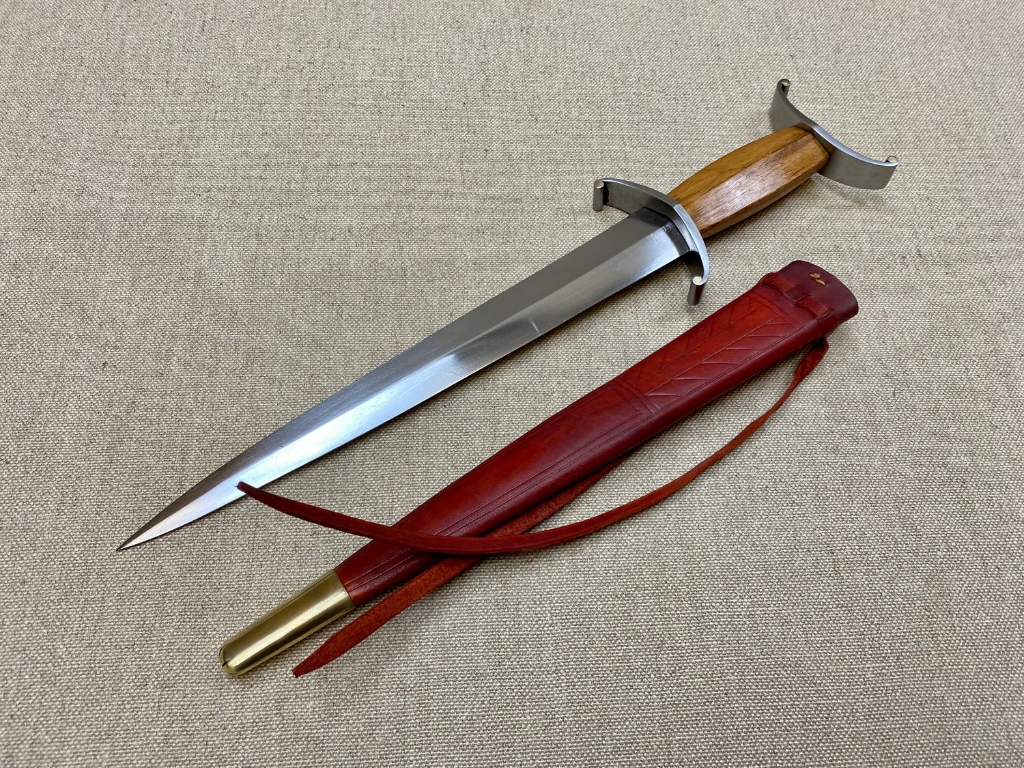
Also found another dagger just like this one in the Rijksmuseum van Oudheden collection:
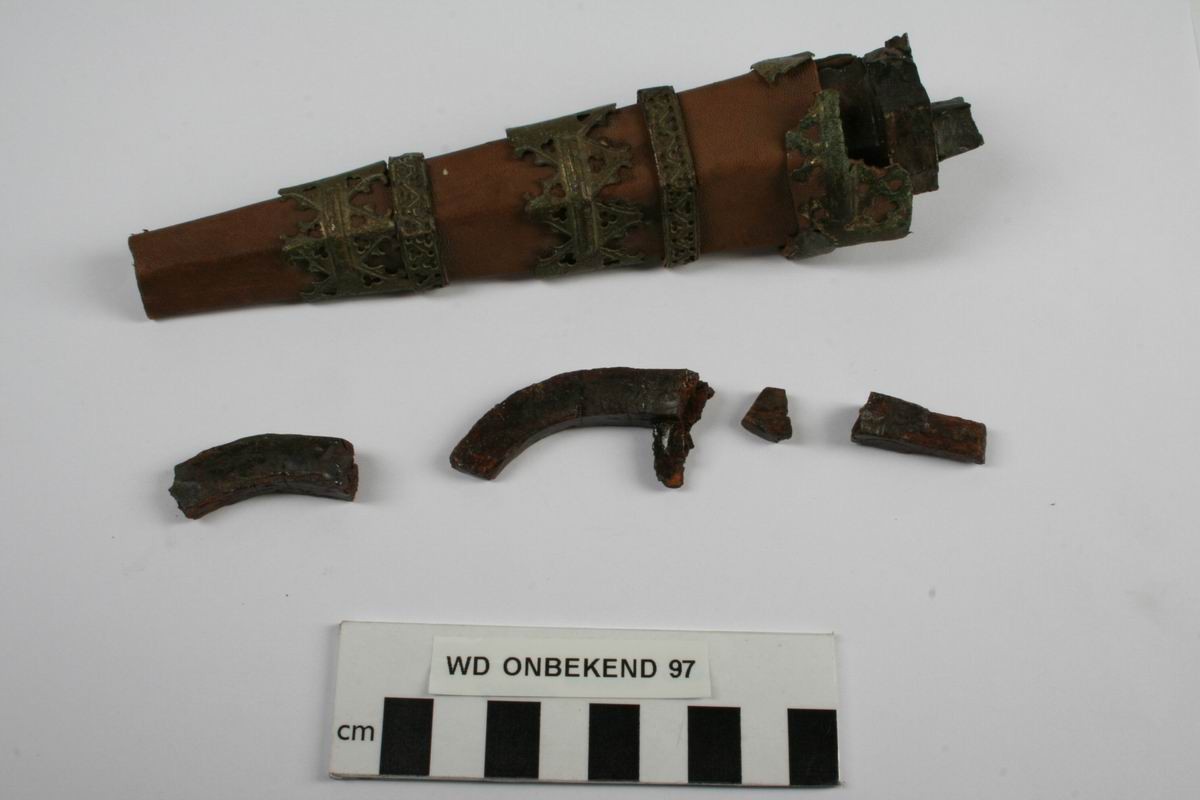
 Attachment: 924.64 KB Attachment: 924.64 KB
[ Download ]
 Attachment: 61.29 KB Attachment: 61.29 KB
[ Download ]
|
|
  |
 |
|
Kristjan Runarsson
|
 Posted: Fri 09 Feb, 2024 3:29 am Post subject: Posted: Fri 09 Feb, 2024 3:29 am Post subject: |
 |
|
Here's another one. Found during excavations in 2002 of the Manour of the Lords of Arkel and the Grote School on the Krijtstraat in Gorinchem. Both the dagger form Leiden and this one seem to have been found in a 14th century archeological context. Interestingly this one has a tinned crossguard. It was found point down as if it had been driven into the ground and left there. There was no sign of a pommel.
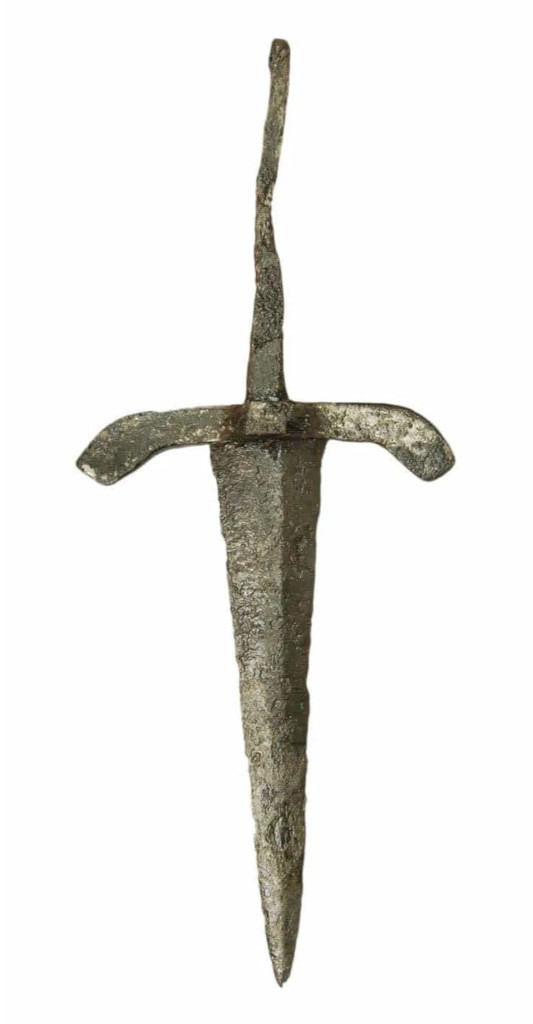
 Attachment: 45.26 KB Attachment: 45.26 KB
[ Download ]
|
|
  |
 |
|
Kristjan Runarsson
|
 Posted: Fri 09 Feb, 2024 4:18 am Post subject: Posted: Fri 09 Feb, 2024 4:18 am Post subject: |
 |
|
Finally, the effigy of Frederik van Drakenborch Bailiff of Utrecht (1350) or, less likely, his brother Werner (bailiff from 1364 to 1377). Not the same but at least it validates the use daggers of a similar type with no pommel at this time and in this region.
 Attachment: 93.6 KB Attachment: 93.6 KB
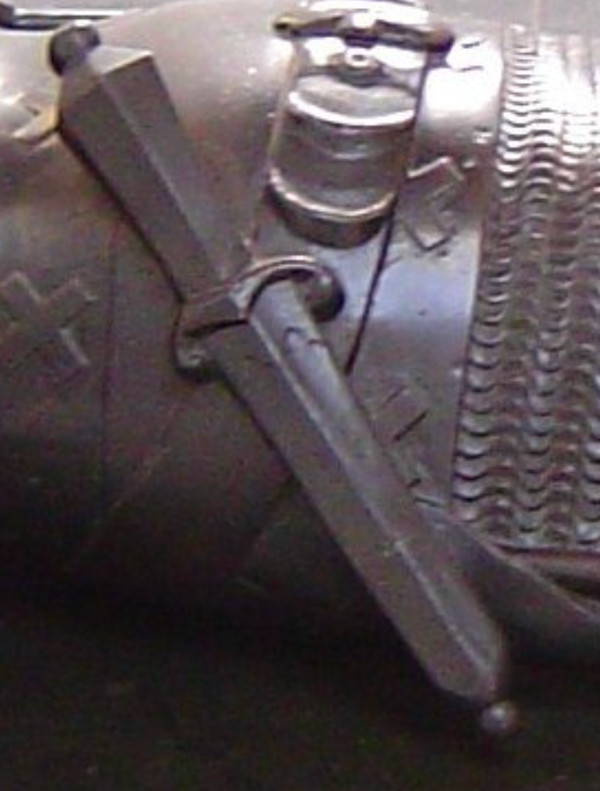
|
|
  |
 |
|
Kristjan Runarsson
|
 Posted: Fri 09 Feb, 2024 7:39 am Post subject: Posted: Fri 09 Feb, 2024 7:39 am Post subject: |
 |
|
Ralph de Knevynton (+1370), Aveley Curch, Essex, England. No pommel, weapon chain attached to end of tang and this is reportedly a Flemish made brass.

 Attachment: 135.04 KB Attachment: 135.04 KB
[ Download ]
Last edited by Kristjan Runarsson on Fri 09 Feb, 2024 7:45 am; edited 1 time in total
|
|
  |
 |
|
Kristjan Runarsson
|
 Posted: Fri 09 Feb, 2024 7:43 am Post subject: Posted: Fri 09 Feb, 2024 7:43 am Post subject: |
 |
|
Rotterdam (1275-1300). different blade type but same general hilt design and structure as the specimen from Leiden.

 Attachment: 21.26 KB Attachment: 21.26 KB
[ Download ]
|
|
  |
 |
Leo Todeschini
Industry Professional

|
|
   |
 |
|
Kristjan Runarsson
|
 Posted: Sat 10 Feb, 2024 4:06 am Post subject: Posted: Sat 10 Feb, 2024 4:06 am Post subject: |
 |
|
| Quote: | | You are right. What I looked at and saw a regular tang is in fact curled around on both the first and last daggers to form a loop. |
That's what I was thinking because the loop may have been an attachment for a weapon chain. How would that have worked to retain the handle? Usually when I'm making a knife I just put a shingle on the end of the tang and peen it into a mushroom on the end of the handle. That gives a good tight fit for the wood of the handle, unless the wood starts to shrink like on one of my swords. That caused the cross guard to start wobbling so I had to rip the leather off take the handle off with a chisel and replace the wood handle with a pair of oak shells that I glued together lengthwise which stopped the cross guard from see-sawing sideway every time it was hit.
About pommels, I did find this other English effigy. It's a rather similar dagger but not exactly the same as the Leiden specimen either. It does have the same kind of sheath and it has a pommel. I'm now wondering how this thing didn't keep tumbling over sideways because of the weight of the pommel when suspended on a belt ... unless the pommel was hollow??? ... which is a feature that I recently saw on an Irish sword. This is the effigy of the Esquire John Cray (1392), St Andrew's Church, Chinnor, Oxfordshire, England:
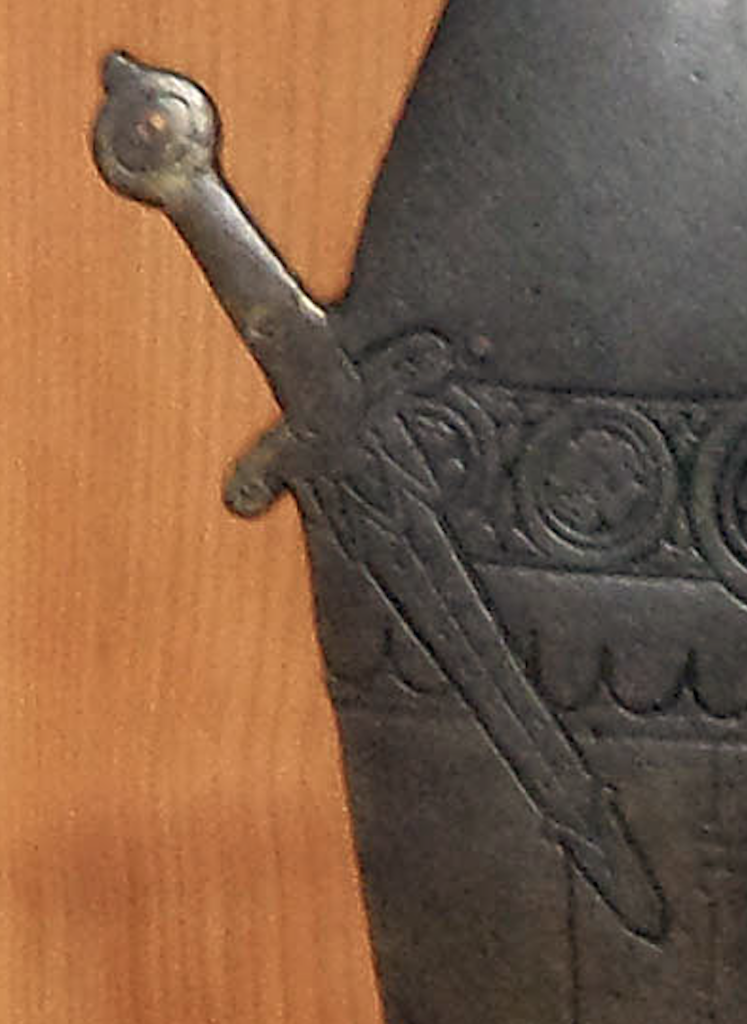
Then there is the effigy of Willem Wenemaer (1325), Oudheidkundig Museum van de Bijloke, Gent, East Flanders, Belgium. This dagger was actually cited in the original dig report as having a similar sheath to the Leiden one. It also has a handle with an integral wooden pommel and a long cross guard. This one looks more like the daggers that are all over the early 14th century Flemish manuscripts and that seem to have wood pommels integral to the handle. I like these daggers, they completely shattered the ill informed preconceptions I had of what 14th century daggers were like.
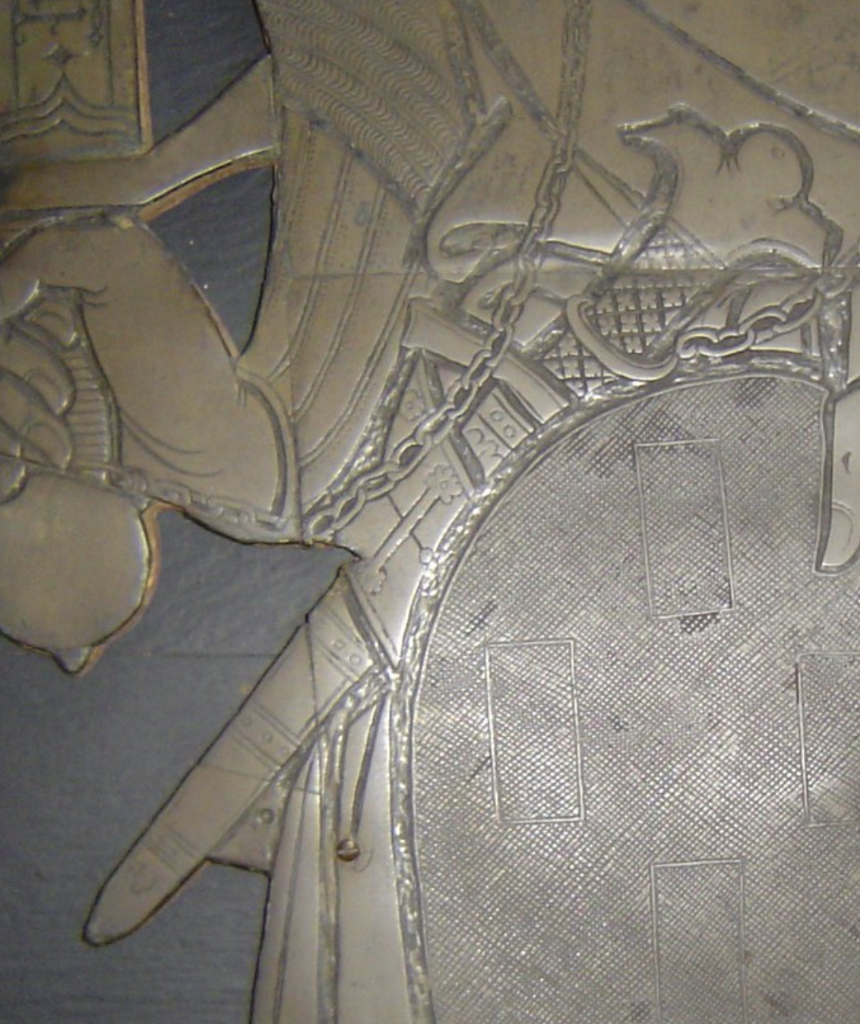
 Attachment: 705.99 KB Attachment: 705.99 KB
[ Download ]
 Attachment: 717.84 KB Attachment: 717.84 KB
[ Download ]
|
|
  |
 |
Greyson Brown

|
 Posted: Sat 10 Feb, 2024 9:56 am Post subject: Posted: Sat 10 Feb, 2024 9:56 am Post subject: |
 |
|
| Kristjan Runarsson wrote: | | How would that have worked to retain the handle? |
To me the tang looks thin enough at the end to work cold as long as the end has been normalized. I would fit the grip, bend the tang over (essentially like a clinched nail) to tighten everything as much as possible, and then fold the end back around to form the ring. If you use some kind of mandrel to form the loop around, you could probably hammer straight down on the top of the loop (with the mandrel still in place) a bit to tighten things up more. That is more likely to add a small kink to the tang rather than really peening things, but it would still make things a touch tighter.
Of course, all of that might be an over-complicated answer in a world where (just like today) copious amounts of glue was an available option.
"So long as I can keep the path of honor I am well content."
-Sir Arthur Conan Doyle, The White Company
|
|
  |
 |
|
Sean Manning
|
 Posted: Sat 10 Feb, 2024 11:53 am Post subject: Posted: Sat 10 Feb, 2024 11:53 am Post subject: |
 |
|
The dagger in the Museum De Lakenhal has the 6" to 8" blade that we see on most knightly effigies in the late 14th and early 15th century. If you could wear a sword, you didn't need a giant dagger that looked impressive but was bad at doing dagger work.
weekly writing ~ material culture
|
|
  |
 |
Dan Kary

|
 Posted: Sat 10 Feb, 2024 1:42 pm Post subject: Posted: Sat 10 Feb, 2024 1:42 pm Post subject: |
 |
|
Ignorant person's (me) comment incoming...
In regards to the handle construction is there maybe some kind of washer or something? Although how do you get the loop? Is the loop big enough to keep the handle in place? Would the tang go through the handle, then maybe bent in a loop but tight up against the handle? How could you do that without destroying the handle (wouldn't you have to do this while the tang is hot? Really curious...(to me anyways).
|
|
  |
 |
Victor R.

|
 Posted: Sat 10 Feb, 2024 3:12 pm Post subject: Posted: Sat 10 Feb, 2024 3:12 pm Post subject: |
 |
|
| Kristjan Runarsson wrote: | | That's what I was thinking because the loop may have been an attachment for a weapon chain. How would that have worked to retain the handle? |
Could it have been made more secure by burning it through instead of peening? I know the technique can be a pain to do, but isn't it supposed to create a very secure fit without the aid of a "mechanical" fastening method? Given the delicate nature of the end of the tang, maybe start with a small pilot hole all the way through, then heat and fit until the tang is through the other end and snug against the cross? Alternatively, any remnants of pitch on the examples missing their grips? Almost certainly had to be one or the other.
|
|
  |
 |
|
Kristjan Runarsson
|
 Posted: Mon 12 Feb, 2024 3:17 am Post subject: Posted: Mon 12 Feb, 2024 3:17 am Post subject: |
 |
|
There's a bunch of figures of armed citizens of Stralsund armed with daggers that have some similar features to the daggers I posted painted onto columns in the Sankt Nikolai church (~1370), Stralsund, Mecklenburg-Vorpommern, Germany. Some have handles similar to the one in the Knevynton effigy. One of them has a triangular blade shape similar to the Leiden and Gorinchem daggers, others have different blade shapes including one that could almost be classified as a short sword. That last one looks like the one in the Cray effigy. Others look like some type of Baselard or Anelace hilt. The high degree of variety in 14th century dagger designs is interesting I expected to see nothing but Kidney- and Rondel daggers with a sprinkling of Hollywood standard quillon daggers. I thnk I may actually go for the Willem Wenemaer dagger. It looks like nothing I've ever seen at a 14th century event.
See here: http://id.bildindex.de/thing/0001184969
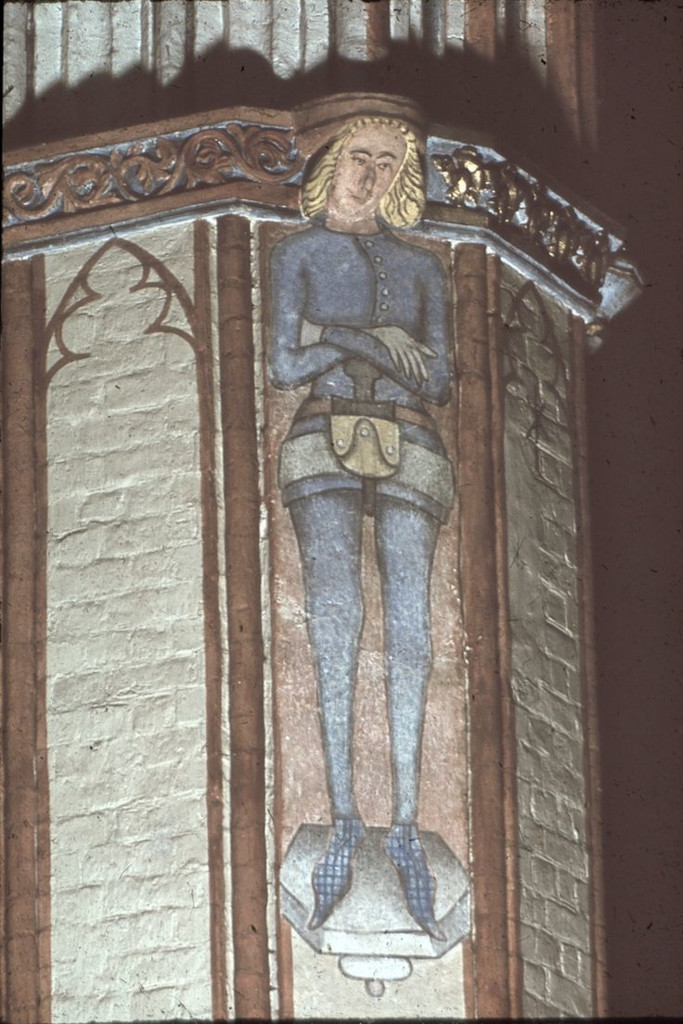

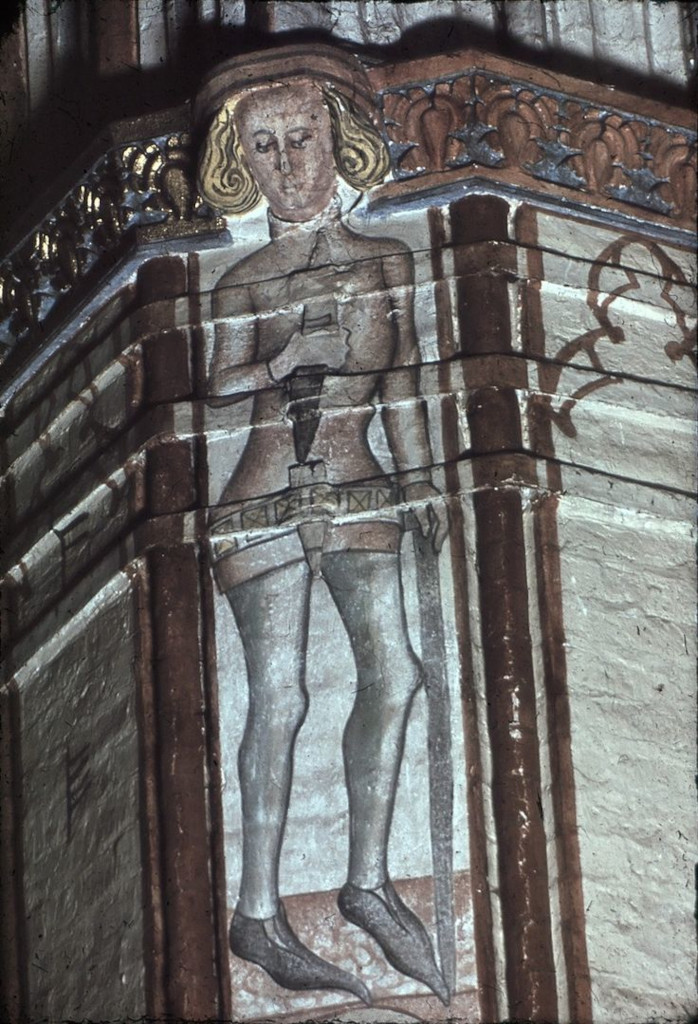

 Attachment: 238.24 KB Attachment: 238.24 KB
[ Download ]
 Attachment: 241.13 KB Attachment: 241.13 KB
[ Download ]
 Attachment: 203.48 KB Attachment: 203.48 KB
[ Download ]
 Attachment: 203.6 KB Attachment: 203.6 KB
[ Download ]
|
|
  |
 |
|
Kristjan Runarsson
|
 Posted: Wed 14 Feb, 2024 7:35 am Post subject: Posted: Wed 14 Feb, 2024 7:35 am Post subject: |
 |
|
Found an example of the Leiden dagger in an effigy ... or as close as I'm likely ever going to get. Epitaph eines Rheingrafen (+1375-95), Evangelische Paulskirche, Kreuznach, Rhineland-Pfalz. This is likely Hartrad, Rheingraf von Stein who died in 1375 rather than his brother Konrad von Stein who apparently became a priest in Kreuznach. Kreuznach btw. is between frankfurt and Luxemobourg so not that far removed from Flemish cultural influence.
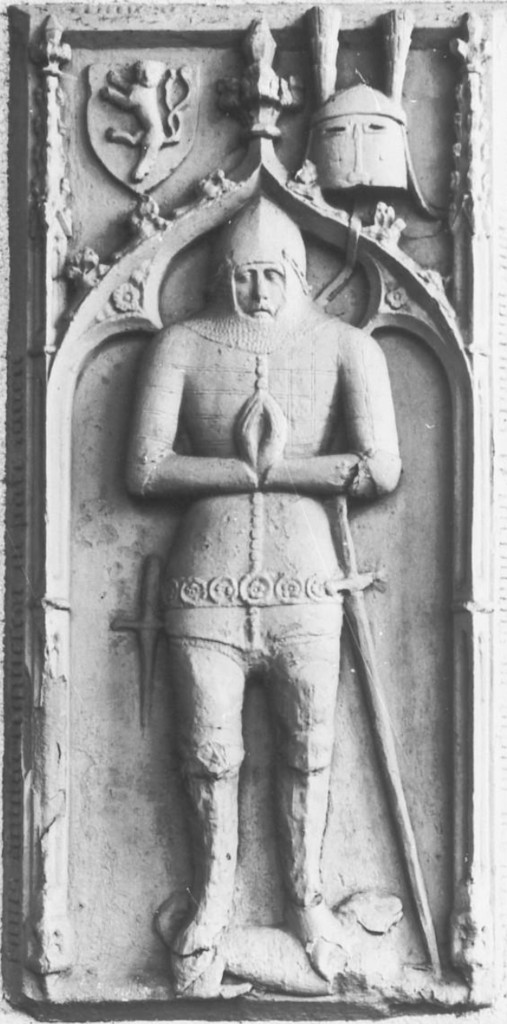
 Attachment: 127.84 KB Attachment: 127.84 KB
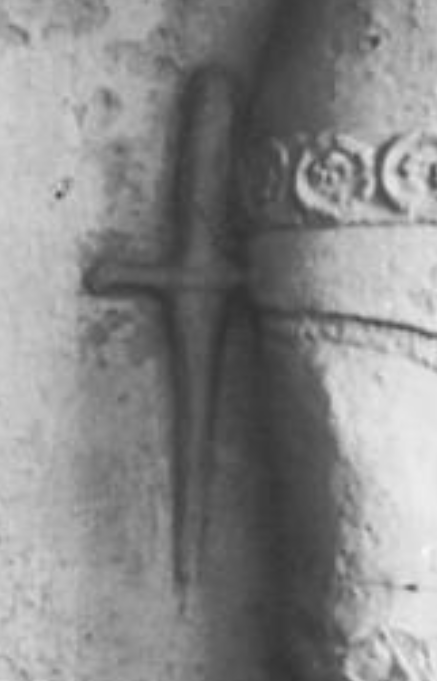
 Attachment: 121.13 KB Attachment: 121.13 KB
[ Download ]
|
|
  |
 |
|
|

